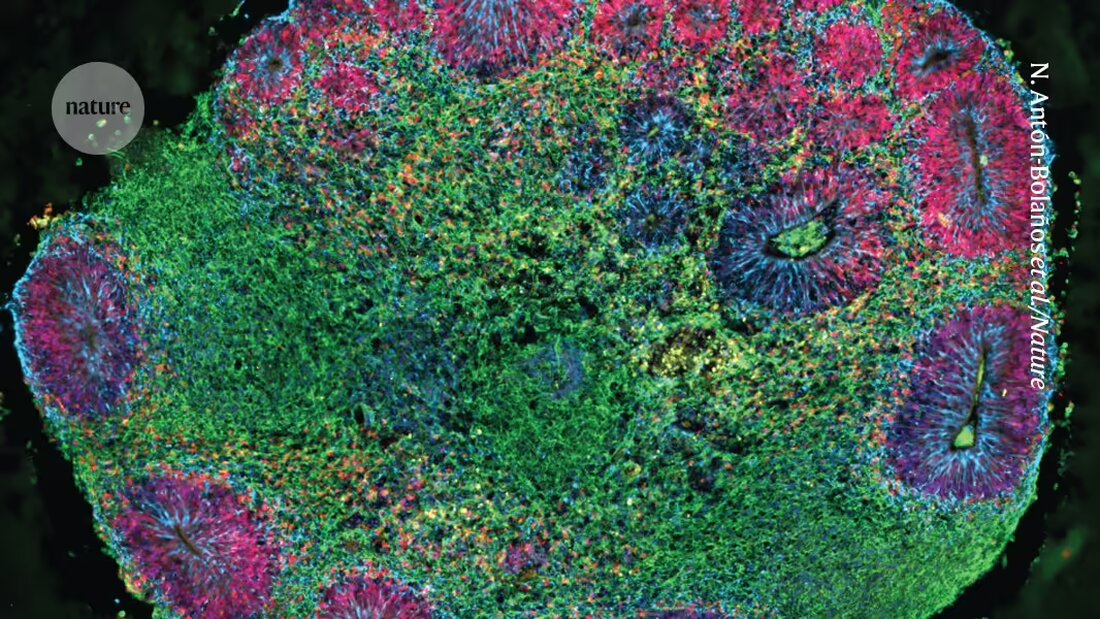For the first time, researchers have 3D models of the brain created that contain different cell types from multiple people 1. These “village in a bowl” organoids could help reveal why the brain’s response to drugs varies from person to person.
Other teams have created 2D slices of brain cells from more than one human donor 2, but this work reports robust 3D systems suitable for research.
“It's a really powerful technology and approach,” says Tomasz Nowakowski, a biologist at the University of California, San Francisco, who was not involved in the study. Many groups will likely use this method, he adds. “It’s a technical masterpiece.”
These chimeric cultures, which the authors call chimeroids, combine cells from up to five donors. Future versions could house cells from hundreds of people. "What if we could one day use chimeroids as avatars to predict individual responses to new therapeutics before testing them in a trial? I like to imagine that future," says Paola Arlotta, a stem cell biologist at Harvard University in Cambridge, Massachusetts, and senior author of the study published today inNaturewas published.
It takes a village
Model systems called organoids mimic the cellular composition of organs like intestines and lungs. Researchers make them by bathing stem cells from a human donor in a precisely formulated cocktail of chemicals, which stimulates the stem cells to develop into all of the cell types typically present in a given organ. The culture conditions also encourage the cells to come together into a complex 3D shape.
Brain organoids are particularly slow-growing and difficult to handle, and researchers are looking for better ways to make them. One approach was to combine cells from multiple donors into a single organoid. Multidonor cell clusters could be easier to handle and capture a wide variety of human genetics in a single model. However, because the parent stem cells grow at different rates, rapidly growing lines inevitably take over.
Out of many, one
The trick, Arlotta and her colleagues report, is to first create a series of single-donor organoids. As these mature, the cells in all organoids assume similar growth rates. By homogenizing these structures and pooling the cells together, it is possible to grow a composite organoid. The authors' chimeroids have expanded to about 3-5 millimeters after three months and contain the same cell types present in fetal cortical tissue.
“This is a really big advance,” says Robert Vries, managing director of organoid research company HUB Organoids in Utrecht, Netherlands. The community studying the central nervous system “really needs more organoid systems.”
Chimeroids should allow researchers to figure out whether drugs will have different effects on different people. As a test case, the team treated the multidonor organoids with neurotoxic drugs. Ethanol, which causes fetal alcohol syndrome, reduced the number of cells in a single donor cell line. Cells from this donor grew faster when combined with valproic acid, an antiepileptic drug that is associated with an increased risk of Autism Spectrum Disorder is associated with childrenin uterocame into contact with it.
Growing pains
However, careful follow-up work will be required to ensure that the effects observed in the chimeric models arise from the genetics of a particular cell line and not from an interaction between closely packed cells, warns Vries.
Chimeroids are also labor-intensive to produce, adds Nowakowski, who studies the model in his lab. But automated cell culture systems should ease the workload and make these models suitable for more efficient experiments on brain diseases.

 Suche
Suche
 Mein Konto
Mein Konto

